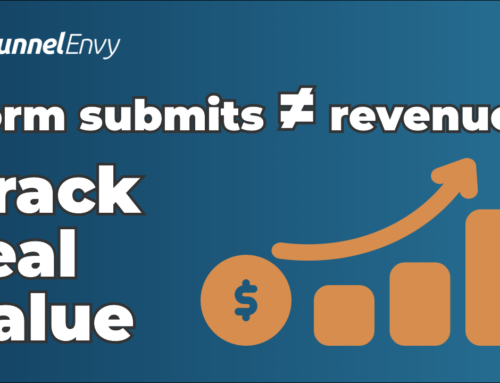A/B testing is a powerful tool for B2B marketers and considered a staple of the toolbox for improving a campaign. Marketing teams in every industry with every type of product and service can use A/B testing to figure out which option in a campaign works.
The fact that you must conduct A/B testing in a specific method to attain success doesn’t get discussed as regularly. A/B testing done the wrong way can cause a lot of wasted time and effort for your team. Even if you generate sufficient data from the tests, it won’t be as effective as with proper methodology.
To help you better handle your A/B testing, we provide three examples of some of the most crucial A/B tests you can perform in many different contexts. Remember: the advice here is general, so you’ll need to think about how to apply it to your specific funnel.
Landing Pages With a High Bounce Rate
Every experienced marketer knows the dreadful, pit-of-your-stomach feeling you get when you spend lots of time and resources building up what you think is a great landing page for your funnel, only to find that it flops with very little engagement and conversions.
You likely have a few landing pages already in mind that need to be tweaked and improved. If not, an excellent way to get started with this type of A/B test is to explore your analytics platform to identify which pages need the most improvement.
Here are a few other tips for landing page testing:
- Have a predetermined length in mind. You don’t want to have one A/B test running for a week, another for a month, and another for just a few days – this distorts your data and dilutes the quality of the tests’ results.
- Don’t make traffic splits equal. You should start by giving the existing landing page a larger share of site traffic, then slowly increase it. Do this to account for the potential negatives of incorporating any new idea onto a page.
- Consider predictive traffic. In this blog, we’ve previously explored some of the relative benefits and drawbacks of using A/B tests compared to predictive bandits, which use machine learning models to determine the optimal version of your site to deliver to users. The most significant benefit of this approach is that it avoids the “one-size-fits-all” problem with A/B testing.
Important Form Page for your Funnel
You can apply form pages in several different ways within your funnel, for everything from a critical conversion step to a basic logistics element like booking a video call. With this in mind, it’s important to think carefully about which form you decide to A/B test.
A seemingly-minor form page setup improperly can have just as much of a negative impact as a final form directly tied to conversions. Share on XThat doesn’t mean, however, that you should only test critical funnels directly linked to the main conversions you’re tracking. A seemingly-minor form page setup improperly can have just as much of a negative impact as a final form directly tied to conversions.
For example, imagine a well-designed form with dynamic fields, progress indicators, and other staples that should convert properly. However, when a user reaches the last step or segment – or even the confirmation page – there’s an element that causes users to lose confidence and fail to complete the subsequent steps to get them down the funnel.
That’s why we recommend considering A/B tests for even the smallest elements when it comes to forms. Form field length, field titles, progress bars, button text – even the form’s primary and secondary colors can impact how people view your forms.
It may not seem significant, but as is the case with many other types of A/B testing, a tiny change can significantly impact conversion rates.
Email Subject Lines
Almost every successful modern funnel will use some kind of email, especially for B2B marketers who need to provide their prospects with a significant amount of information along each step of their funnel.
Unlike some of the other elements discussed in this post, most people know the importance of email subject lines. They are frequently cited as determining whether people even open an email. According to Zippia, just under half of all email recipients will open an email based on the subject line alone. Similarly, about 7 in 10 email recipients will mark an email as spam based solely on the subject line.
Here are a few ways to A/B test email subject lines:
- Experiment with length. Shorter is usually better here. Generally, it’s recommended that your email subjects be somewhere between 20 and 60 characters, but you should run some tests to find your own sweet spot.
- Incorporate one or more emojis. Of course, it’s important to understand your audience and the email’s subject matter – with certain somber topics, it may not be smart to use emojis. On the other hand, an unexpected emoji can be a great way to stand out in someone’s inbox.
- Sentence structure. Sometimes, a question is the most effective way to get a recipient’s attention. In other cases, using a short statement or fact is best. Remember that many marketers get in trouble by trying to make their subject lines too mysterious or clever. This mystery is often a direct route to the spam folder.
Regarding length and timing, the guidelines we mentioned apply here: start with a small percentage of your list receiving alternate subject lines. A 70/30 split is a great starting point; from there, you can slowly increase the number of subscribers who receive the alternate version.
Also, remember that you’ll need to get sufficient data to ensure that your test results have value. The specific amount of time it takes for your data to be significant varies depending on the size of your list, but you’ll generally want to give the test at least a week.
Final Thoughts on A/B testing
Anyone who says A/B testing isn’t valuable to their marketing funnel or overall business probably hasn’t been able to find an approach that works for them. Indeed, there are some situations where A/B testing isn’t the best option for tweaking your funnel.
But in many cases, all that’s standing between you and a successful A/B test is the right approach. If you’ve been struggling to find meaningful results from A/B testing, or you simply want to get an outside perspective on improving the process, our team at FunnelEnvy can help. We have many years of combined experience helping companies of all sizes in all industries ensure they get the most out of the resources they put into testing.
Just click here to fill out a quick quiz to learn more about us and our pricing and determine how best we can assist you with your funnel optimization requirements.




